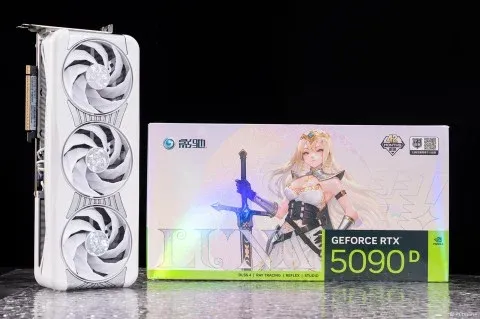NVIDIA GeForce RTX 5090D Reportedly Redesigned Due to US Export Rules
If you've been keeping up with NVIDIA's high-end graphics cards, particularly those for the Chinese market, you might have heard some significant news floating around. The GeForce RTX 5090D, a card that's already China-specialized, is reportedly being massively redesigned due to new export regulations from the US. This isn't just a revision; we're talking about potential downgrades that can significantly alter its performance.
Why the Downgrade. Deciphering the New Rules
The cause of the issue is new US export rules. The regulations now more strictly limit the memory bandwidth and total I/O performance of high-end chips that are exported to China. The original RTX 5090D, while already a modified version of the global RTX 5090, apparently still breached these new limits, leading to its reported ban in the region during the second quarter of 2025.
To fulfill the demands, NVIDIA is seemingly working on a new version of the RTX 5090D, but online forum rumors, particularly from Baidu, suggest that this new card will be a very different beast.
What Could the "New" RTX 5090D Be Like. A Close Examination of Rumored Specs
The rumored specifications point to a radical reduction in raw power:
- CUDA Cores on the Chopping Block: The core count can drop from the original 5090's massive 21,760 to a much more modest 14,080. That's a tremendous cut.
- Memory System Update: The memory bus is said to be cut down to a 384-bit bus. This, combined with a potential reduction of VRAM capacity to 24GB GDDR7 (from the 5090/original 5090D's 32GB), would cap the memory bandwidth at around 1344 GB/s – just under the new export barrier of 1.4 TB/s.
If these rumors prove true, the performance difference between this revised RTX 5090D and the full-fat RTX 5090 (and even its original "D" variant) could be substantial, impacting both gaming and professional workloads. Some leakers even speculate it will perform more like an "RTX PRO 5000-level" card, basically stripping it of flagship status.
What Does This Mean for Gamers and the Market.
A heavily nerfed RTX 5090D would likely need to come with a significantly lower price to be acceptable. The card's flagship status would be heavily questioned.
By the way, these same Baidu forum discussions also talked about other potential NVIDIA releases:
- RTX 5060 might be launching sometime on May 20th, perhaps going head to head against AMD's rumored RX 9060 XT.
- There's also rumor of a more premium "80-class" GPU, an RTX 5080 Super or RTX 5080 Ti, later in the year. This card is rumored to feature 24GB of VRAM.
Would this beefier 80-class card turn into a rebranded RTX 5090D for the Chinese market if its specs align with the "RTX PRO 5000" profile. All speculation now, but it's clear NVIDIA is facing a delicate situation with these new export restrictions.
When NVIDIA first released its RTX 50 series Blackwell GPUs in January, the initial models included the RTX 5090, RTX 5080, RTX 5070 Ti, and RTX 5070. The family grew with the release of the RTX 5060 Ti and the upcoming RTX 5060. This potential RTX 5080 Super/Ti would further grow the lineup, but where it stands in relation to the revised RTX 5090D is a matter of great speculation.
It's a continuing saga, and gamers and tech enthusiasts both will be watching to see how these problems are solved by NVIDIA in an official manner and what the final model of the RTX 5090D (and the rest of the RTX 50 series) really has to deliver.
